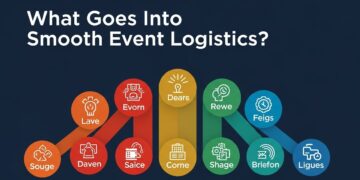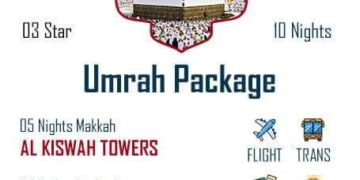To make your essay stand out, you can use creative structures beyond the standard five-paragraph model, such as a narrative arc, a frame story, juxtaposition, a thematic mosaic, or reverse chronology. The structure of your essay isn’t just a container for your ideas; it’s a powerful tool that can create suspense, highlight contrast, and leave a lasting impression on your reader.
Moving beyond the basic essay format shows intellectual confidence and creativity. While the five-paragraph essay is a great tool for learning the basics, these advanced structures can elevate your writing from simply competent to truly memorable. Mastering these is a key part of advanced essay writing.
1. The Narrative Structure (The Story Arc)
What It Is: This structure organizes your essay like a short story. It follows a classic arc with an exposition (setting the scene and introducing a problem), rising action (describing the challenges and building tension), a climax (the turning point or moment of realization), and a resolution (the outcome and what you learned).
When to Use It: It’s perfect for personal statements, college application essays, and any reflective paper where the goal is to show personal growth or a journey of discovery.
Example: An essay about overcoming public speaking anxiety wouldn’t just state the fear. It would start by describing the physical feeling of panic before a presentation (exposition). The rising action would detail the failed attempts and small practice sessions. The climax would be the moment you successfully deliver a presentation, and the resolution would reflect on how that newfound confidence has impacted other areas of your life.
2. The Frame Story (The Bookend Structure)
What It Is: This is an elegant structure where you begin your essay with a specific, vivid anecdote or image. You then move into the main body of your essay to explore a larger idea. In the conclusion, you return to that opening image, but now you and the reader see it in a new light based on the exploration in the middle. “
When to Use It: It’s excellent for essays that connect a small, personal experience to a much larger academic, social, or philosophical issue.
Example: An essay about economic inequality could begin with a detailed description of a single pair of worn-out shoes you saw on a bus. The body of the essay could then explore the statistics and systemic causes of poverty. The conclusion would return to the image of the shoes, which are no longer just shoes, but a powerful symbol of the complex issues you just analyzed.
3. The Juxtaposition (Point-Counterpoint) Structure
What It Is: This structure is built entirely on contrast. You place two opposing ideas, images, or arguments side-by-side, often in alternating paragraphs or sections. This forces the reader to make connections and see the topic in a more nuanced way.
When to Use It: It’s ideal for comparative essays in literature or history, or for argumentative essays where you want to explore two sides of an issue before landing on your final conclusion.
Example: An essay on the impact of technology could have a paragraph describing the beauty of a handwritten letter, immediately followed by a paragraph about the efficiency of an instant message. By alternating between these two poles (e.g., old vs. new, slow vs. fast, personal vs. public), you create a dynamic tension that makes your final argument more powerful.
4. The Thematic (Mosaic) Structure
What It Is: Instead of a single, linear argument that marches from point A to B to C, this structure is composed of several different “tiles”—short anecdotes, examples, facts, or reflections—that are all connected by a central theme. The full argument isn’t stated in one place; it emerges from the combination of all the pieces.
When to Use It: This works beautifully for abstract or complex topics like “creativity,” “belonging,” or “failure,” where a single, linear argument might feel too simplistic.
Example: An essay about “resilience” could contain a short section about how mangrove trees survive in saltwater, another about a historical figure who overcame incredible odds, and a third, more personal story about a time you failed and recovered. Together, these pieces form a rich and multifaceted exploration of the theme.
5. The Chronological Inversion (Reverse Chronology) Structure
What It Is: You start at the end. Your introduction presents a dramatic final moment or outcome. The following paragraphs then work backward in time, revealing the causes and events that led to that conclusion.
When to Use It: This is a fantastic tool for creating immediate suspense and grabbing your reader’s attention. It’s best suited for narrative or personal essays where the journey is more important than the destination.
Example: Your essay could begin with the sentence: “The letter of acceptance was finally in my hands, but all I felt was a strange sense of relief that the great kitchen fire of 2023 was finally behind me.” This instantly makes the reader ask, “What fire?” The rest of the essay then unfolds the story in reverse, explaining the events that led to that dramatic conclusion.
Frequently Asked Questions (FAQ)
Q1: Is the standard five-paragraph essay always bad?
Not at all! The five-paragraph essay is a fantastic tool for creating a clear and organized argument, especially under pressure, like during an in-class exam. It’s the foundation of academic writing. These creative structures are simply additional tools to use when you want to make a bigger impact.
Q2: Are these creative structures risky to use?
They can be if the execution is poor. A creative structure must always serve the content of the essay. If the structure is confusing or feels like a gimmick, it will hurt your grade. Always choose a structure that logically fits the story or argument you want to tell.
Q3: How do I choose the best structure for my topic?
Think about your main goal. Do you want to show personal growth over time? Use the Narrative Structure. Do you want to highlight a powerful contrast? Use Juxtaposition. Do you want to create suspense? Use Reverse Chronology. Let your content guide your choice of structure.













